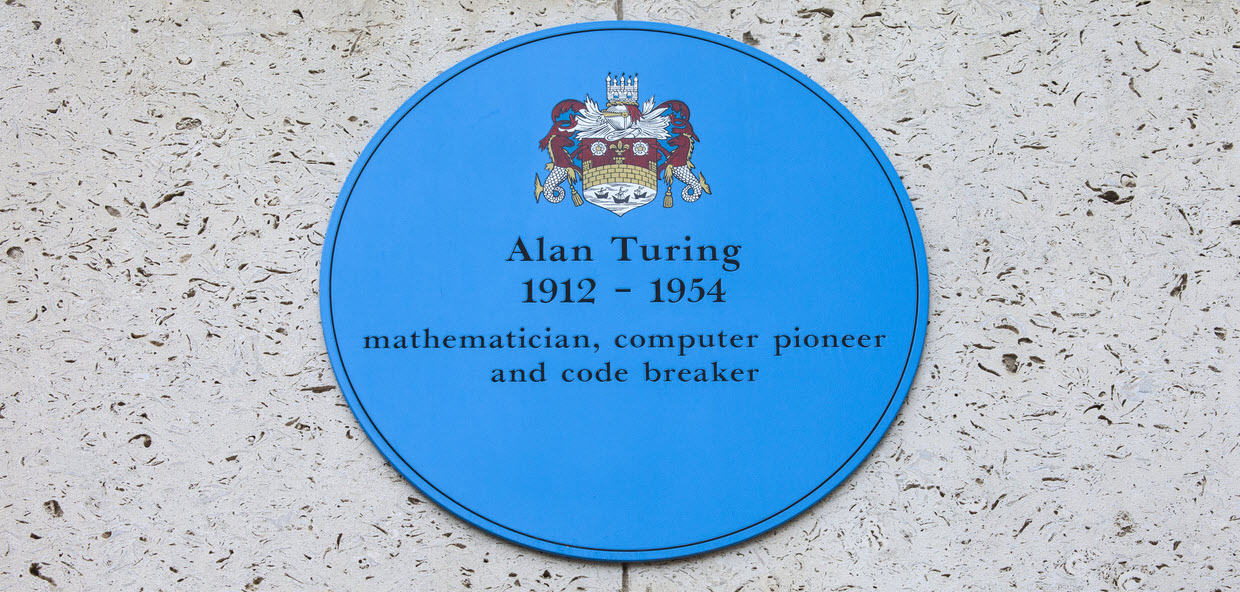| BY J. Robert Parks |
The Turing test and the Turing machine are often mentioned in the history of computers and technology. Alan Turing, the inventor behind those ideas and many others, is less well known, however. This week marks the seventieth anniversary of his death at the young age of 41, when Turing, persecuted for his homosexuality, committed suicide. Teachers and librarians hoping to educate students about everything from code breaking to artificial intelligence to the way members of the gay community were treated in the mid-twentieth century will find a wealth of resources in Gale In Context: World History.
Alan Turing, who was born in London, England, in 1912, had always been interested in science, and he read mathematics at Cambridge University, where he showed unusual talent. In 1936, he developed the theoretical construct that became known as the Turing machine. Turing argued that a machine with a strip of tape could be used to record different states. The machine could read an input and then make a mark on the tape, which could then lead to the ability to read and write other operations. Although later computers would use a different approach than Turing’s, his breakthrough provided new ways of thinking about computers.
In contemporary times, particularly due to the movie The Imitation Game, starring Benedict Cumberbatch, Turing has become better known for his role during World War II in leading a group of code breakers. In the 1920s, the German military built a ciphering system known as Enigma, an encryption system that seemed impossible to decode, given that its “key” changed every twenty-four hours. Turing, however, led a team of mathematicians, linguists, and puzzle enthusiasts that was able to crack the system and continue to do so even as the Nazis updated it.
After the war, Turing returned to working on the theoretical underpinnings of computers. His 1950 paper “Computer Machines and Intelligence” was particularly influential, as he pondered whether machines could think. Turing imagined what he called an imitation game, where two people, a man and a woman, would be in one room, and a third person, the interrogator, was in another room. The interrogator would ask questions of the man and woman, who would write out their answers. The interrogator would see how long it would take to determine, based on their answers, which person was the man and which was the woman.
Turing then imagined what it would be like if a machine that was programmed to reply to questions took the place of either the man or woman. The test would be how long would it take for the interrogator to tell which “person” was actually the machine. This became known as the Turing test and was conducted for years as a way of gauging the progress in artificial intelligence (AI). With the rapid advancements of AI in the last five years, the Turing test has been passed, so to speak.
Unfortunately, Turing did not live long enough to see his ideas on computing and artificial intelligence transform our world. In the 1950s, homosexuality was a criminal offense in many European countries. It’s common to believe that homosexuality had always been seen as deviant, criminal behavior, but historians have shown that gay and lesbian cultures were much more accepted in Europe in the 1910s and 1920s. The rise of fascism and Stalinism in the 1930s, however, led to an intensifying condemnation of homosexual behavior throughout Europe, which continued after the war.
In 1952, as part of an investigation into a burglary at his home, Turing admitted to the police that he’d been having a homosexual relationship. He was charged with a crime and chose to plead guilty. His security clearance was revoked, making it difficult for him to continue his work. Furthermore, a condition of his probation required him to undergo horrific hormone treatments, which were considered the appropriate “therapy” for gay men at the time. Distraught by their effects and the ostracism he faced, he committed suicide on June 7, 1954. It would be another twenty years before his work during World War II was declassified and he received the overdue recognition that his accomplishments merited.
About the Author
J. Robert Parks is a former professor and frequent contributor to Gale In Context: U.S. History and Gale In Context: World History who enjoys thinking about how our understanding of history affects and reflects contemporary culture.




